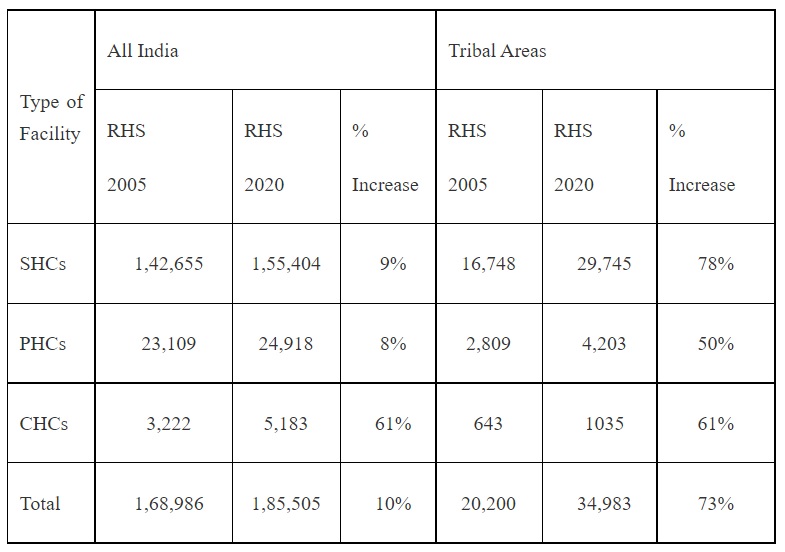To address the healthcare challenges, particularly in rural areas, the National Rural Health Mission (NRHM) was launched in 2005 to supplement the efforts of the State/UT Governments to provide accessible, affordable and quality healthcare to all those who access public health facilities including tribal, backward, slum areas. Currently, NRHM is a sub-mission of National Health Mission (NHM).
Under the National Health Mission (NHM), financial and technical support is provided to States/UTs to strengthen their health care systems including for setting-up/upgrading public health facilities and augmenting health human resource on contractual basis for provision of equitable, affordable healthcare to all its citizens including the people of tribal, backward and slum areas based on requirements posed by the States in their Programme Implementation Plans (PIPs).
Various interventions that are implemented for better healthcare in tribal areas and beneficiaries are as follows;
The population norms for setting up Health Facilities in tribal areas are relaxed. Against the population norms of 5,000, 30,000, and 1,20,000 for setting up of Sub Centre, PHC and CHC respectively, in tribal and desert areas its 3,000, 20,000 and 80,000.
Relaxed population norms for Mobile Medical Units (MMUs) & Ambulances
SC/ST households are covered under Ayushman Bharat, Pradhan Mantri Jan Arogya Yojana (AB-PMJAY) for health coverage up to Rs 5 Lakh per family per year as per Socio Economic Caste Census (SECC).
Further, all tribal majority districts whose composite health index is below the State average have been identified as High Priority Districts (HPDs) and these districts receive more resources per capita under the NHM as compared to the rest of the districts in the State. These districts receive higher per capita funding, have enhanced monitoring and focussed supportive supervision and are encouraged to adopt innovative approaches to address their peculiar health challenges.
Due to above interventions under NHM, there has been 73% increase in Health Facilities available in Tribal areas as compared to 10% increase in all India.

NHM support is also provided for provision of a host of free services in public healthcare facilities in tribal, backward and slum areas, related to maternal health, child health, adolescent health, family planning, universal immunisation programme, and for major diseases such as Tuberculosis, vector borne diseases like Malaria, Dengue and Kala Azar, Leprosy etc.
As part of Ayushman Bharat, the Government is supporting the States for transformation of Sub Health Centres and Primary Health Centres into 1.5 lakh Health and Wellness Centres across the country by December, 2022 for provision of Comprehensive Primary Health Care (CPHC) that includes preventive healthcare and health promotion at the community level with continuum of care approach. Under this programme, CPHC services of an expanded range of servicesthat are universal and free to users, with a focus on wellness, are provided, closer to the community. Further Ayushman Bharat, Pradhan Mantri Jan Arogya Yojana (AB-PMJAY) provides health coverage up to Rs 5 Lakh per family per year to around 10.74 crore poor and vulnerable families as per Socio Economic Caste Census (SECC).
Financial support is also provided to States for providing hard area allowance, performance-based incentives, providing accommodation and transport facilities in rural and remote areas, sponsoring training programmes, etc to engaged human resources to address the issue of shortage of doctors and specialists in the public health facilities.
The Union Minister of State for Health and Family Welfare, Dr Bharati Pravin Pawar stated this in a written reply in the LokSabha here today.